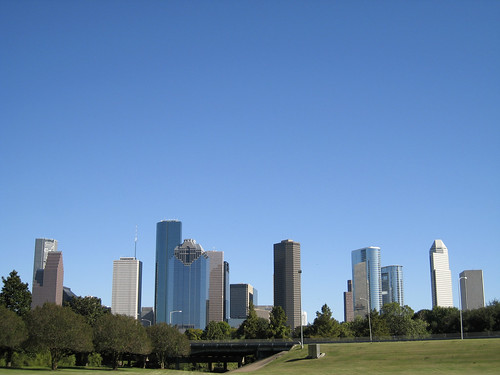Today’s question is simple in structure but unbelievably complex in application. Can we restore old neighborhoods without turning them into overpriced and underused parcels of land?
After walking and driving through a number of neighborhoods in Houston that are in dire need of restoration and in the end, residents who care about their community I pondered that question. My quick, off of the cuff answer, at least for Houston, is that it cannot be done. My long, thought out answer is that it can be done but would require numerous people and organizations working together to make it happen.
Just east of downtown there is an area that used to be a warehouse district, complete with a massive rail network. Over the years, as the need for freight in the downtown area has dropped, those warehouses have moved further out of town and left a swath of land with nothing on it. The land is walking distance from downtown, yet most of it stays empty. There has been some development, but for the most part it is just grass. The townhomes that have been built were done quickly and from the looks of it, very cheaply, leaving a lot of them empty. There are no grocery stores or even convenience stores, just warehouses next to grass lots.
The city has decided to build a light rail line through the area, connecting downtown to a slightly more populated neighborhood further east. One would think that this would spur development; It hasn’t. They have also built a bike trail; It’s hardly ridden on.
What’s my point in all of this? The City of Houston and developers have an opportunity to make this area a great example of what urban living could be like. This is a great chance to add to the urban population without making the costs completely unreasonable.
Developers, this is your chance to build capacity without sacrificing history or usability. How you ask? Row style housing at affordable prices, it’s that simple. Build a few blocks of row style houses with maybe a garage on the bottom and people will start to move in. Give the homes small backyards and decent spacing between the front door and the road and people will be happy.
City of Houston, setup the neighborhoods with decent parking markings for street parking, add a few bus stops, and repair the roads. The people will move in. These are large investments for predicted returns, but they’re worth it. Right now that land is barely generating anything as far as property taxes, there is nowhere for it to go but up.
Maybe I am a daydreamer or grasping at straws, but I do have hope that Houston sees the different run down neighborhoods around the city as potential, rather than lost causes. I talk about this subject with my wife pretty often, usually as we are driving through these neighborhoods. I’ll look at an old building and make some remark like, “Wouldn’t that be an awesome office?”, maybe someone with the time and wherewithal has the same feeling.

